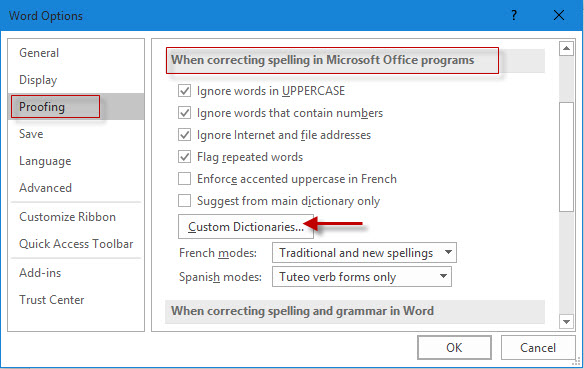

You can now open that folder in Windows Explorer: just paste the path in the start menu's search field, and hit Enter. Drag with your mouse to select the path: right-click on it and choose " Copy". The folder location where your custom.dic file is saved is displayed next to " File path", and will look like " C: \ Users \ UserName \ AppData \ Roaming \ Microsoft \ UProof" (where " UserName" is your actual Windows user name).You can add or delete new ones all right from here! To add new words one by one, just click on the Edit Word List button: any word manually add won't be caught as misspelled any longer. The Custom Dictionaries dialog will open, and showing dictionary files associated with your profile.Select " Proofing" options on the left, and click on the " Custom Dictionaries" button. There are two ways to add new words as a batch to this dictionary: click on the File button (top left), and choose " Options". Behind-the-scenes, this creates a new entry in a file called CUSTOM.DIC, which stands for " custom dictionary": it's just a text file containing a list of words and acronyms.Whenever you check your document for mistakes, you can make Word 2010 recognize new / unrecognized words highlighted in red squigly underline by right-clicking on them and choosing " Add to Dictionary" from the context menu.

Microsoft Word's spell checker includes the most common words for the supported languages (like English).

› Word 2010 › Add words to the CUSTOM.DIC dictionary file in Word 2010 / 2013


 0 kommentar(er)
0 kommentar(er)
